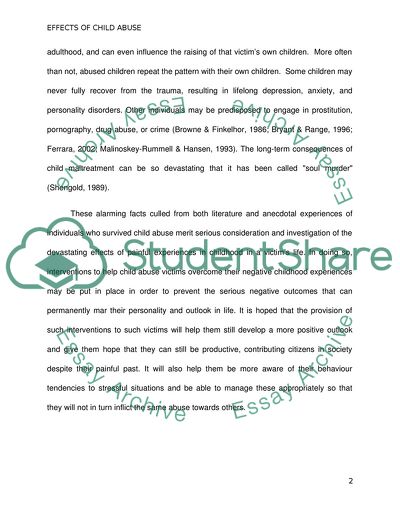Cite this document
(Effects of Child Abuse on Physical and Psychological Development Assignment, n.d.)
Effects of Child Abuse on Physical and Psychological Development Assignment. Retrieved from https://studentshare.org/sociology/1609092-child-abuse-and-the-effects-that-it-has-on-their-physical-and-psychological-development
Effects of Child Abuse on Physical and Psychological Development Assignment. Retrieved from https://studentshare.org/sociology/1609092-child-abuse-and-the-effects-that-it-has-on-their-physical-and-psychological-development
(Effects of Child Abuse on Physical and Psychological Development Assignment)
Effects of Child Abuse on Physical and Psychological Development Assignment. https://studentshare.org/sociology/1609092-child-abuse-and-the-effects-that-it-has-on-their-physical-and-psychological-development.
Effects of Child Abuse on Physical and Psychological Development Assignment. https://studentshare.org/sociology/1609092-child-abuse-and-the-effects-that-it-has-on-their-physical-and-psychological-development.
“Effects of Child Abuse on Physical and Psychological Development Assignment”, n.d. https://studentshare.org/sociology/1609092-child-abuse-and-the-effects-that-it-has-on-their-physical-and-psychological-development.


